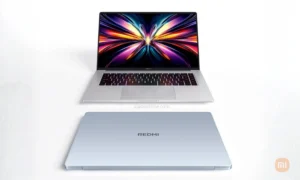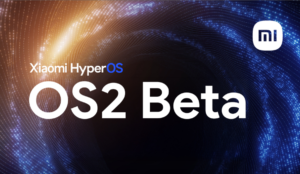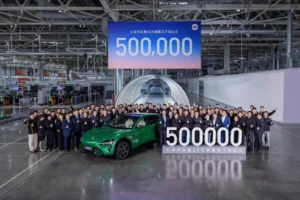Xiaomi Secures Memory Supply Amid AI Surge for 2026
Xiaomi Secures 2026 Memory Supply Amidst Rising AI Demand: A Strategic Move
The tech world is buzzing, and Xiaomi is making headlines again! With Artificial Intelligence (AI) driving a surge in memory prices, Xiaomi’s president, Lu Weibing, has revealed a proactive strategy to secure their memory supply through 2026. This move safeguards Xiaomi’s production pipeline, ensuring that the popular smartphones and other devices continue to roll out. But what does this mean for consumers and the broader tech landscape? Let’s dive into the details of Xiaomi’s strategic play in the face of AI-driven memory supply challenges.

The AI Boom: A Memory Price Catalyst
Lu Weibing addressed the rising memory supply prices during a Q3 2025 earnings call, pointing out that it’s not just a typical cyclical trend. The explosion of AI applications, especially generative AI, is the real culprit.
HBM: The New Memory King
High Bandwidth Memory (HBM) is essential for AI applications. Data centers and deep learning models need it. This demand has strained the global memory production capacity, pushing smartphone manufacturers like Xiaomi down the priority list. The demand of memory impacts the prices of Smartphone segment.
“This trend is structural, not temporary,” Lu emphasized. DRAM prices have surged, reportedly by 20-30% recently. NVIDIA and other AI giants are claiming much of the supply.
Xiaomi’s Strategic Response: Long-Term Agreements
So, what’s Xiaomi doing about it? They’re not just sitting back and watching prices skyrocket.
Securing the Supply Chain for 2026
Lu Weibing revealed that Xiaomi has already signed a comprehensive agreement with its partners to secure its memory supply throughout 2026. This crucial step ensures Xiaomi won’t face disruptions in obtaining vital components. The Xiaomi´s portfolio will keep running smoothly.
Price Adjustments and Product Mix Optimization
However, securing the supply doesn’t eliminate cost pressures. Lu acknowledged that Xiaomi might need to make adjustments:
- Price Increases: Consumers could see slight price bumps on future models.
- Product Mix Upgrade: Xiaomi plans to balance costs with innovative features and design improvements, offering greater value. Think better displays or advanced AI integrations.
This “product mix upgrade” strategy is common in the industry. Manufacturers offset costs by packing more value into each device. This is also mentioned on the last tech news.
Financial Performance: Steady Growth Amidst Challenges
Despite component challenges, Xiaomi’s financial performance remains strong. In Q3 2025:
- Total Group Revenue: Approximately 86 billion RMB (about 11.18 billion USD or 10.3 billion EUR).
- Smartphone Segment Revenue: Around 58 billion RMB (approximately 7.54 billion USD / 6.94 billion EUR).
- Smartphone Shipments: 43.3 million units, a 0.5% year-over-year increase.
This marks the ninth consecutive quarter of positive growth in shipments, with Xiaomi holding an estimated 14-15% global market share, according to Canalys analysts. The success of series like the Xiaomi 15 and the HyperOS ecosystem have been key drivers. The HyperOS ecosystem provides hardware and software in a seamless way.
Industry Implications and Consumer Impact
[IMAGEN_2]
Lu Weibing’s statement signals a broader shift. The rising demand for AI is reshaping the consumer electronics landscape. This means everyday device manufacturers need to adapt or risk falling behind.
The Future of Smartphones
For consumers, this could mean more expensive smartphones in 2026. But it also means smarter, more efficient devices. Imagine a Xiaomi 18 with on-device AI capabilities rivaling advanced assistants, made possible by optimizations that offset memory costs. For example, you could consider the Xiaomi 17 Pro Max Reigns Supreme in 2025-2026! article.
Balancing Cost and Innovation
Xiaomi’s approach highlights the balancing act between cost and innovation. By securing their memory supply and strategically adjusting their product offerings, they aim to continue delivering competitive devices. This Technology is always changing.
Xiaomi’s Long-term Vision
Xiaomi’s proactive approach to the memory supply challenge shows their long-term vision. By addressing potential issues early, they aim to maintain their position as a leading player in the global smartphone market. This includes the company´s new adventure in the car industry, read the Xiaomi Auto Profitability: EV Business Achieves Milestone! post.
In conclusion, Xiaomi is not just reacting to the AI boom; they are strategically adapting to it. While consumers may see some price adjustments, the company is focused on delivering innovative and valuable products. Lu Weibing’s insights underscore the pragmatic decisions driving technological progress. The world will be watching to see if Xiaomi’s strategies pay off at events like the Mobile World Congress in 2026.






